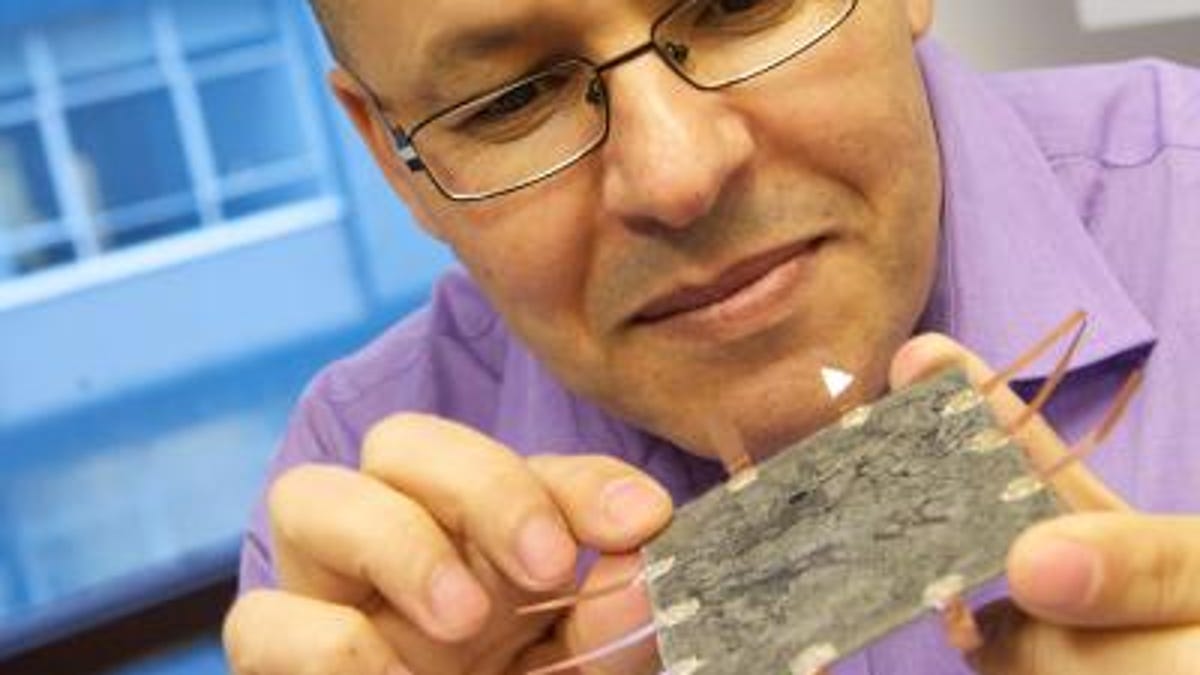Smart paint could make bridges, mines safer
Scottish researchers are working on a low-cost, easily applied material that can detect microscopic faults in structures--and transmit that information remotely.

Is there a paint color called "crack in the bridge?"
There could be one day, if Scottish researchers continue to make progress on a low-cost smart paint that could detect microscopic faults in structures such as bridges, wind turbines, and mines.
The paint, under development at the University of Strathclyde in Glasgow, is made of highly aligned carbon nanotubes, which can carry an electrical current, and a recycled waste product known as fly ash that's usually produced during coal combustion.
When mixed, the paint takes on a cement-like property that makes it hardy and particularly useful in areas where the weather can make regular safety monitoring difficult.
"There are no limitations as to where it could be used, and the low-cost nature gives it a significant advantage over the current options available in the industry," Mohamed Saafi, chair of the university's department of civil engineering, said in a statement. "The process of producing and applying the paint also gives it an advantage, as no expertise is required and monitoring itself is straightforward."
When the carbon nanotubes in the paint start to bend, their conductivity changes, indicating potential structural defects. The paint can be sprayed onto any surface, and wireless communication nodes attached to it allow it to remotely communicate unseen damage--micro-cracks in a wind turbine's concrete foundation, for example--hopefully before anyone gets hurt. The nodes will be partly powered by a battery, the Scottish scientists say, but could also rely on energy-harvesting methods such as solar panels or the vibration of trains passing through a tunnel.
"Current technology is restricted to looking at specific areas of a structure at any given time," Saafi said. "However, smart paint covers the whole structure, which is particularly useful to maximize the opportunity of preventing significant damage."
Saafi and Ph.D. candidate David McGahon have developed a prototype of the paint and say tests have shown it to be "highly effective." They hope to conduct further tests in Glasgow in the next couple of months.
"What we've done to date is to try to find the exact percentage of carbon nanotubes we need to make it cost effective," McGahon told U.K. publication The Engineer. "We've also done bending tests using strain sensors."
Chris Poland, chairman and senior principal at the structural-engineering firm Degenkolb Engineers, imagines that the smart paint could be effective, but said its usefulness will depend on both the type of structure and the material used to construct it.
"For example, micro cracking in the steel support shaft of a wind turbine may indicate that there is a problem developing," he told CNET. "If it were a concrete column, the micro cracks would only suggest that he column was starting to do its job."
This isn't the first we've heard of paint that does more than just sit there looking pretty.
The chemical structure of Nissan's Scratch Shield paint enables it to repair small auto surface scratches by filling in the gaps.
And a few years back, researchers at Rice University and City College of New York came up with a way to embed silver nanoparticles in paint to infuse it with germ-killing properties.
The smart paint out of Scotland seems to have even wider implications, as it could potentially impact public safety.
Update, January 31 at 11:55 a.m. PT: The article has been updated to incorporate comments by structural engineer Chris Poland.

